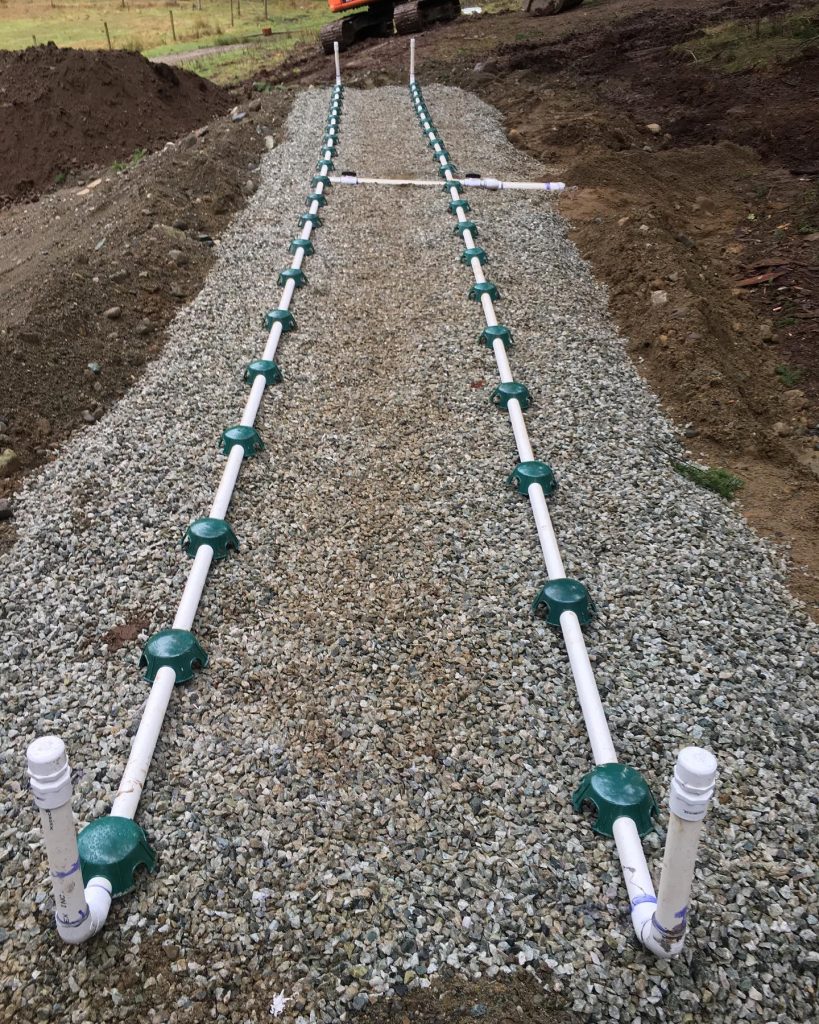8.5.2 Infiltration Beds
The infiltration bed closely resembles an infiltration trench but is a single basin filled with gravel. Unlike infiltration trenches, the drains/trenches in the bed can be placed as close as 50 cm apart, reducing the area needed by half. This design is suitable for loose soils or when space is limited.
However, infiltration beds create greater risks of the water table rising than with infiltration trenches due to the close spacing between drains that may lead to a more concentrated discharge of water into the soil, potentially increasing the rate at which water is introduced to the subsurface.
The grading should allow 50 cm of gravel to be placed directly on the ground and under the dispersal drains. Dispersion pipes are inserted into the top layer of gravel. The bed is covered with a geotextile and loose sand/soil.
The following table summarises the recommended design criteria for infiltration beds.
| Design Criteria | Recommendations |
|---|---|
| Depth of trench | 0.6 – 0.8 m |
| Width of trench | 0.3 – 1.0 m |
| Length of trench | <20 m |
| Distance between trenches | 0.5 – 1 m |
| Depth of drainpipe | >0.15 m beneath surface |
| Thickness of gravel layer under drainpipe | 0.10 – 0.50 cm |
| Distance to water source | >30 m |
| Level above the groundwater table | >1.5 m |
The following figure shows the pipes of an infiltration bed placed on a layer of gravel. The pipes have to be covered by gravel and a geotextile. Loose soil should then cover the geotextile.

